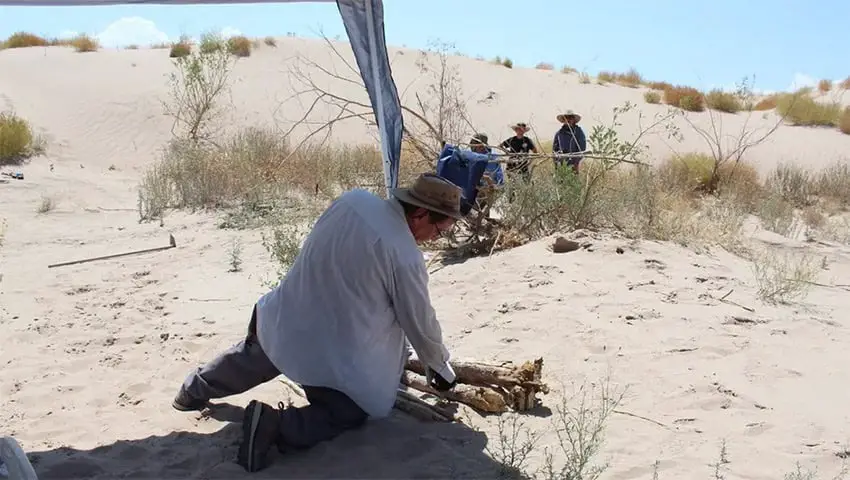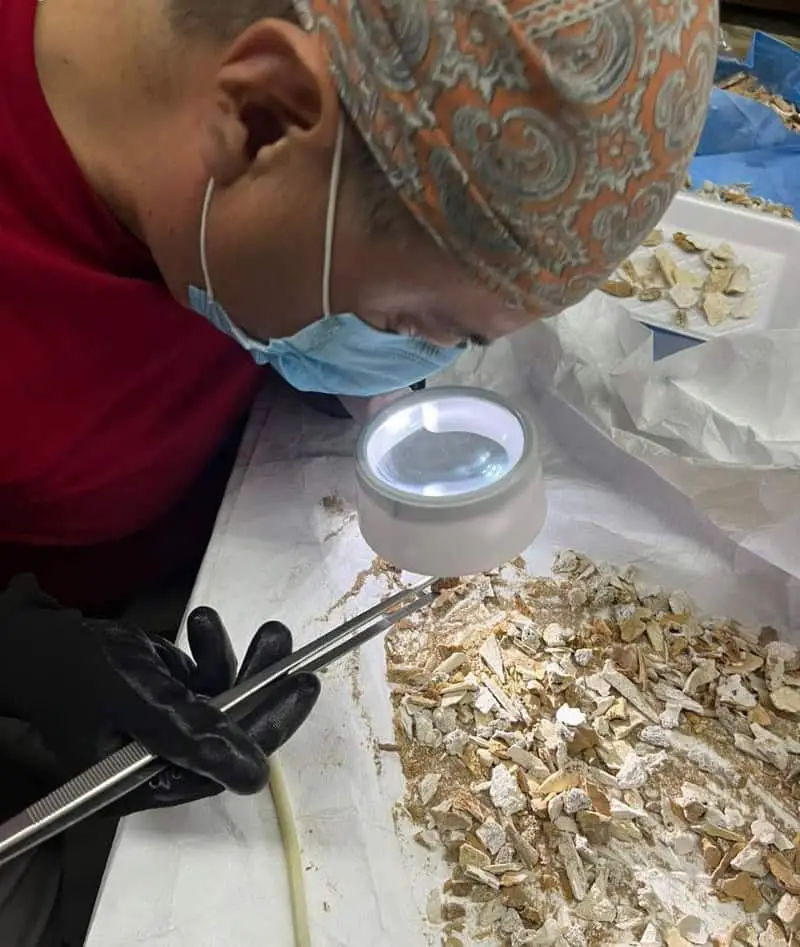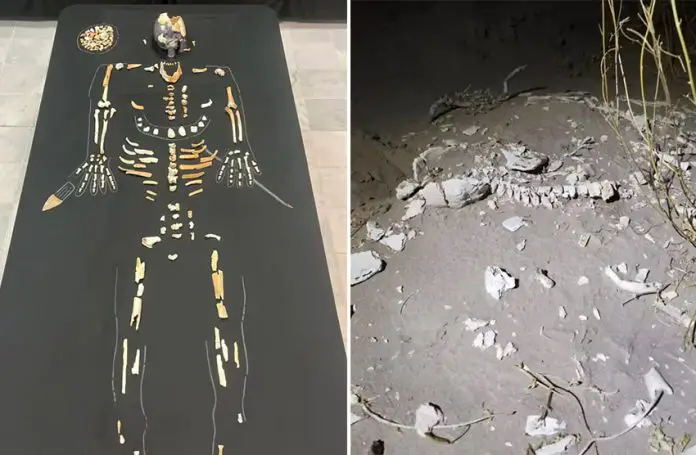Officials in the state of Coahuila last week presented the skeletal remains of the “Man of Bilbao,” a nomad who roamed the high desert between 700 and 1,000 years ago. The unprecedented finding could open a new chapter in the study of northern Mexico’s ancient peoples.
The man’s skull was initially found in 2022 by tourists riding on ATVs in the Bilbao Dunes near the Pueblo Mágico of Viesca, Coahuila, prompting the state’s Missing Persons Prosecutor’s Office to investigate further.
After all, maybe the skull belonged to a contemporary person who had met an untimely demise.
However, after more bones and other artifacts were found — and archeologists were brought into the mix — it was determined that the remains were pre-Columbian, and that the man was likely 20 to 30 years old when he died.
Enough bones were found to construct a rudimentary skeleton, which was nicknamed “El Hombre de Bilbao” and presented last Wednesday at the La Laguna Regional Museum in nearby Torreón, Coahuila.
Diego Prieto Hernández, general director of the National Institute of Anthropology and History (INAH), participated in the unveiling for the media and a handful of locals. Others present included archaeologists, anthropologists and members of the Attorney General’s Office of Coahuila.

An INAH press release said the “surprising” initial finding led to the discovery of a new archaeological site that offers valuable insights into ancient hunter-gatherers in the region.
The remains were discovered on the shores of the ancient Viesca lagoon, in the high sand dunes of what is now referred to as the Chihuahuan Desert.
“This discovery allows us to generate a great deal of knowledge about who our ancestors were, how they lived, their health, what they ate, what physical activities they performed, and at what age they died,” said Axel Baños Nocedal, head of the INAH’s Physical Anthropology Department.
He said the finding was significant because it was not only in the middle of nowhere, but because it was in sand, a material that commonly treats bone material poorly. Officials speculated that the dunes buried the remains for centuries, until the movement of ATVs brought them back to the surface.

Archaeologist Yuri de la Rosa explained that the site was likely a hunting or gathering camp, as evidenced by the presence of small flakes from rockwork, finished objects and preforms indicating tool production.
“It was not a site for burying the dead, nor is there any evidence that the body was prepared,” De la Rosa said, “which leads one to think [he] was in his camp, hunting or fishing, and something happened to him or he was sick.”
Near the remains of the man were a seashell necklace, a white flint blade, a projectile point and animal remains. Also found were fragments of pottery and clay models common to the region.
The artifacts suggest the individual belonged to the Desert Cultures, which thrived between 700 and 1,000 years ago.
The lithic materials are similar to those found at Candelaria Cave, a site about 65 kilometers away that was used as a cemetery by nomadic people and was discovered in the 1950s. Caves and rock shelters were traditionally used as burial sites, De la Rosa said.
“El Hombre de Bilbao” and his associated artifacts are currently housed at the La Laguna museum, where they continue to be analyzed.
